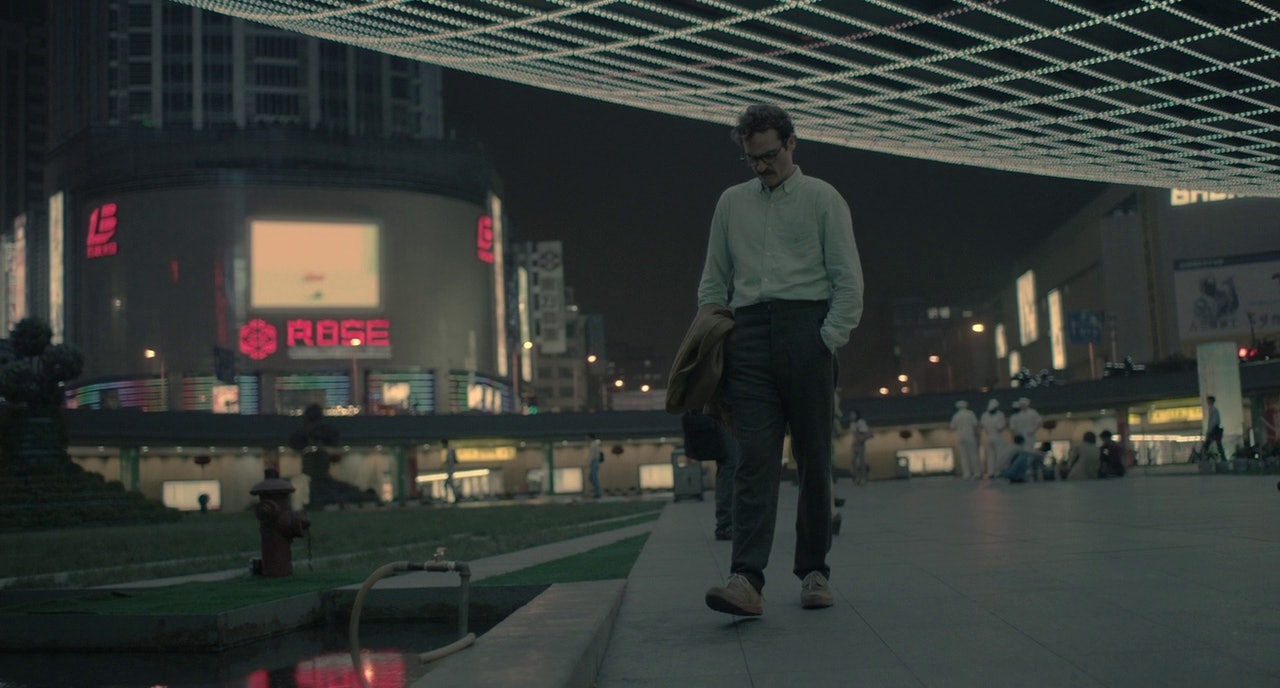
Most sci-fi movies that touch on the future of artificial intelligence offer a dystopian view of the subject. Given how much technology has already contributed to the growing disconnection between human beings, it’s not hard to see why. But every now and then, a movie comes along that offers a slightly more optimistic idea of what the future may hold for humanity once fully sentient operating systems have become commonplace.
No movie does that better than Her. Written and directed by Spike Jonze, the 2013 film takes place in a world where humans are able to form bonds with non-corporeal AI companions. But what makes Her truly special is the way it refuses to believe that AI companions will inevitably be the final push that severs humans from each other forever. Instead, the film suggests that AI relationships may just be another way for human beings to grow and live even more intimately with each other.
Her follows Theodore Twombly (Joaquin Phoenix), a lonely man who makes a living writing love letters for others. Still struggling to recover from the dissolution of his marriage, Theodore purchases an OS companion named Samantha (voiced by Scarlett Johansson) only to find himself developing a deep and romantic bond with her. Over the course of its 126-minute runtime, Her follows Theodore and Samantha as they explore the boundaries and possibilities of their unprecedented relationship.
If that synopsis makes it sound like Her is a weird, sci-fi version of a standard Hollywood romance movie, that’s because it kind of is. But while there’s a lot of joy to be mined from Theodore and Samantha’s strange courtship, it doesn’t take long for Her to make it clear that it’s not really about falling in love, let alone with an AI companion.
Instead, the film uses Theodore and Samantha’s relationship as a vehicle to explore the actual dynamics of love, especially the ways in which people evolve over time and how the ways we change can complicate our romantic relationships.

The film’s final act takes those themes a step further, arguing that learning to let go of love is just as vital to the human experience as love itself. In a brilliant bit of subversion, Her also upends and redefines Theodore and Samantha’s relationship in its final third.
The film’s twist, which is best left unspoiled, simultaneously addresses the inherent power imbalance present in any relationship between a human being and their AI companion, while also revealing that the source of said bond’s imbalance might not be as clear-cut as one would initially assume. In doing so, Jonze adds a complicated, brutal wrinkle to Theodore and Samantha’s relationship, and he prevents the film from feeling too much like a simple male fantasy.
But what’s truly impressive about Jonze’s Oscar-winning script isn’t just how it complicates and acknowledges its male protagonist’s emotional issues, but how it does so without erasing the film’s sense of optimism. The script’s hopeful feeling is even reflected by the film’s visual style and aesthetic. Its color palette, along with Hoyte van Hoytema’s cinematography, places a heavy emphasis on pinks, reds, yellows, and blues, imbuing Her with an infectious visual warmth.

While some parts of the film’s twee, 2010s hipster style feels dated now, Jonze’s vision of the future remains undeniably unique and well-realized. When he was planning the film, Jonze even chose to shoot Her in both Shanghai and Los Angeles in the hopes that visually combining the two cities would make the film’s futuristic version of the latter feel more cutting edge and densely populated than it currently does. The film achieves that effect, but it does so without making Her’s future feel claustrophobic or unsettling.
All of these narrative and visual decisions eventually culminate in the film’s breathtaking final shot, which perfectly sums up Her’s themes by juxtaposing an intimate moment between two people with the sprawl of the film’s futuristic, tech-driven vision of Los Angeles. It’s a shot that, much like the film itself, argues that human intimacy and connection do not need to be erased in favor of technological advancement.
Instead, the film’s closing image proves how both those aspects of modern life can exist in harmony with each other, which is about as optimistic a message as one can hope to find in modern sci-fi.
Her is available to stream on Netflix until Thursday, June 30.







